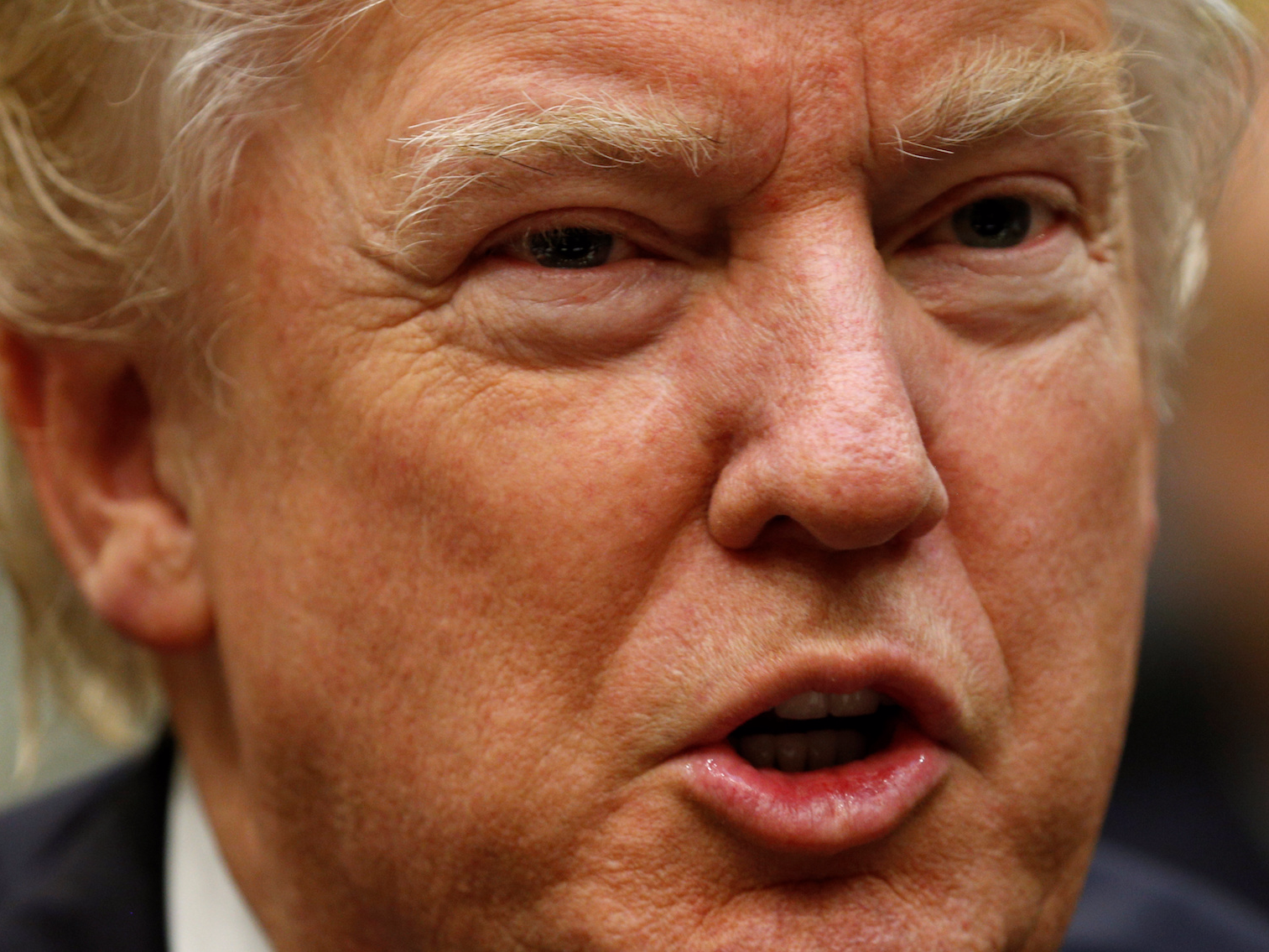President Donald Trump said on Thursday he wants to speed up talks regarding the North American Free Trade Agreement, or NAFTA.
“I have very serious concerns about NAFTA. NAFTA’s been a catastrophe for our country,” he said.
“I want to change it. And maybe we do it – maybe we do a new NAFTA, we put an extra F in the term NAFTA. You know what the F is for, right? Free and fair trade. Not just free trade: free and fair trade. Because it’s very unfair,” he continued.
“So all of the statutory guidelines we’re adhering to, I would like to speed it up if possible.”
(Technically, “fair trade” is a term for trade in which fair prices are paid to producers in developing countries.)
Trump also said that he wants Wilbur Ross, the commerce secretary nominee, to represent the US in the NAFTA negotiations. Trump added that he didn't care whether it was a "renovation" or a "brand-new NAFTA."
Notably, Ross said at his confirmation hearing that NAFTA would be an early priority for his department. He said he was "pro-trade," but only as long as it is "sensible trade."
Trump made the debate over free trade one of the central topics of his campaign after criticizing China, Mexico, and Japan. He argued in favor of ripping up trade deals, said NAFTA was "the worst trade deal in the history of the country," and called the Trans-Pacific Partnership "a rape of our country."
Protectionism has become more popular as American workers worry about losing jobs to other countries. And politicians across the political spectrum zeroed in on these anxieties during the 2016 campaign as they vied for the top job in the White House.
About 89% of Americans said they thought that the loss of US jobs to China was a somewhat or very serious issue, according to Pew Research statistics cited by Bank of America Merrill Lynch's Ethan Harris and Lisa Berlin in May. Moreover, only 46% of Americans said they thought NAFTA was good for the economy.
There is some empirical evidence to back up those grievances. However, trade is not the only factor that has affected American jobs in general and the manufacturing sector in particular; automation has also been a contributor.
In a recent note to clients, Capital Economics' Andrew Hunter included a chart comparing manufacturing output with manufacturing employment. Manufacturing employment has been falling since the mid-1980s and started dropping at a faster rate around 2001 - which coincides with China entering the World Trade Organization. Meanwhile, manufacturing output has been increasing since the mid-1980s and is now near its pre-crisis high.
In other words, firms have overall been able to increase output with fewer workers over the years, which is likely at least partially because of automation.


